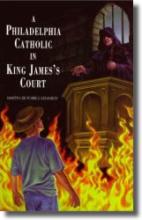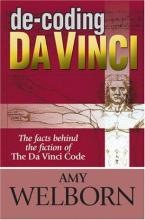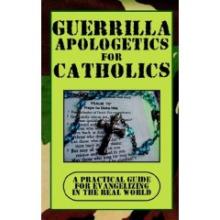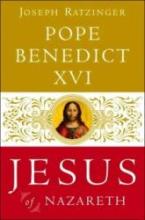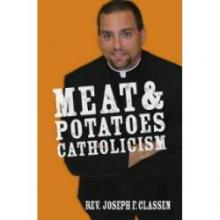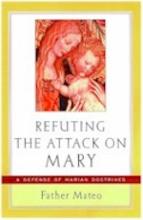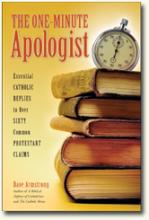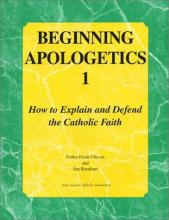Apologetics Book(s)
A Philadelphia Catholic in King James Court
Plot overview: After the tragic death of Mick O'Shea, a Catholic fireman from Philadelphia, his widow Tammy and their children are invited to spend the summer at the Kentucky farm of Tammy's brother Les and his family. The catch? Les is the fundamentalist pastor of a small homegrown "Bible-only" church. He believes it is his duty to "save" his sister and her family from the Catholic Church. The story centers on 17-year-old Michael, who is chosen as the preferred point of contact. At first, Michael is very uncertain about Scripture and feels that his uncle's explanations are right; however, Mick has given him a solid grounding in the Faith, so he seeks the answers in Mick's library.
The author does a fine job of portraying the characters with their struggles and motivations. For example:
- Michael's search for truth is realistic, keeping us guessing how it will turn out.
- Tammy allows her son to face the challenge, realizing that he is too old to just be told the answers. I love the way the author shows the impact of her prayerful support.
- Fundamentalists are beautifully shown to be motivated by charity, while at the same time the weakness of their sola scriptura position is exposed.
- I also enjoyed the contrast between the reactions of the characters who were seeking Truth and those who felt threatened by it. (As a convert, I can appreciate both positions!)
Not only is much excellent apologetic material included in a natural, enjoyable, and engaging format, but it is done with charity and even humility. Topics covered include the Inquisition, the papacy, the role of Mary, and the authority and interpretation of the Bible.
The richness of the Faith comes through in other ways as well. I especially loved the way the author portrays the uniqueness of the Sacrifice of Christ even as it is extended through time in the re-presentation of that Sacrifice in the Mass. Other elements woven into the story include questions of what is really important in life, the support of the Christian community, and the power of prayer.
All in all a very satisfying Catholic novel.
Highly recommended.
de-coding Da Vinci
The 2003 release of the novel The Da Vinci Code created one of the largest literary crazes in recent history. With sales of almost 6 million in its first year, the novel gained a cult-like following. Author Dan Brown's ability to blend fact and fiction left many readers questioning what they really knew of the origins of Christianity. News is now out that we can expect to see the story in theaters in about a year. Certainly viewers will come away with many of the same questions readers had as to how much, if any, of the story line is factual, and how much is fiction.
Fortunately for those who want to sort out the facts, Amy Welborn has written decoding Da Vinci: the Facts Behind the Fiction of the Da Vinci Code. Welborn covers everything from the marketing of the book to the sources of information presented, and ultimately reveals a "startling number of blatant, glaring errors on matter great and small that should send up red flags to anyone reading the novel as a source of facts, rather than just pure fiction" (decoding Da Vinci p. 10). She also helps explain why this confusion over fact versus fiction is occurring when she states:
Historical fiction is a very popular genre, but in writing historical fiction, the author makes an implicit deal with the reader. He ... promises that while the novel concerns fictional characters engaged in imagined activities, the basic historical framework is correct. [Readers] trust the author is telling the truth about history. In The Da Vinci Code, imaginative detail and false historical assertions are presented as facts and the fruit of serious historical research, which they simply are not. (p. 21 italics added)decoding Da Vinci is handily divided into a preface, a section entitled "How to Use this Book", an introduction which provides a plot synopsis, ten chapters (each addressing one key issue of the book), and an epilogue. The plot synopsis is thorough enough that you need not have read the novel to make use of this book. Each chapter also ends with further reading suggestions and questions for review and discussion. Readers can thus study particular issues in more depth on their own, or even use the material for a group study. The book is a quick read from cover to cover, but also organized so that each chapter stands on its own for easy reference.
Throughout her book, Welborn uses a tone readers will be familiar with from her Prove It series and other writings. Straightforward and to-the-point, she is never condescending or preachy. The book thus becomes a powerful tool to help counter the myths Brown has presented in his original work.
The up-coming movie release makes this book an important and timely choice for adults and older teens to read.
Guerilla Apologetics for Catholics
Jesus of Nazareth
God establishes a relationship between himself and us. He puts himself within reach of our invocation. He enters into relationship with us and enables us to be in relationship with him. Yet this means that in some sense he hands himself over to our human world. He has made himself accessible and, therefore, vulnerable as well. He assumes the risk of relationship, of communion, with us. The process that was brought to completion in the Incarnation had begun with the giving of the divine name.... God has now truly made himself accessible in his incarnate Son. He has become a part of our world: he has, as it were, put himself into our hands. This enables us to understand what the petition for the sanctification of the divine name means. The name of God can now be misused and so God himself can be sullied. The name of God can be co-opted for our purposes and so the image of God can also be distorted. The more he gives himself into our hands, the more we can obscure his light; the closer he is, the more our misuse can disfigure him. Martin Buber once said that when we consider all the ways in which God's name has been so shamefully misused, we almost despair of uttering it ourselves. But to keep it silent would be an outright refusal of the love with which God comes to us. Buber says that our only recourse is to try as reverently as possible to pick up and purify the polluted fragments of the divine name. But there is no way we can do that alone. All we can do is plead with him not to allow the light of his name to be destroyed in the world.He elucidates the various Gospel stories from many angles, though certain patterns emerge. In many places, he discusses and refutes modern theories about the Life of Christ (many of which have the common thread of doubting the historical validity of the Gospels). These are usually the most difficult portions of the book to follow. I found it helpful to underline principal portions in order to keep a particular thread fresh in my memory. Brief notes on the various threads might also be helpful. He also references Eastern imagery from traditional icons and what we have learned from Tradition (from the teachings of the Church Fathers) about the various Gospel passages. This is a life-changing book. There are many stories, like the Transfiguration, that I had little understanding of to begin with and will never hear or think about in the same way again. I studied this over the course of a school year with a group of high school students. We studied approximately 10 to 15 pages at a time and discussed everything in depth. I don't think it's a book that most high schoolers could read on their own. Reading it in chunks together allowed us to delve into it more deeply (I'm certain that I got more out of it than I would have if I had read it on my own.) The discussions provided an opportunity to clarify confusing parts of the text (many times I was able to provide some helpful background info such as an explanation of a philosophical idea). The students really enjoyed the book and got a lot out of it. Besides the obvious benefits of the content of the book itself, they're now less intimidated by an "intellectual" book and understand that it's okay to just make a beginning in reading such a book and that it's perfectly normal to get more out of such a book every time they read it. For those who might be interested, I wrote a number of blog posts on this book while I was studying it. You can read them here.
Recently released in softcover by Ignatius Press (that edition includes an index!). They are also expected to release a study guide for this book in October 2008.
An audio version is also available through your local bookstore or from Audible.com
Meat & Potatoes Catholicism
Ordained in 2003, this is Fr. Classen's second book published by Our Sunday Visitor.
Refuting the Attack on Mary
The One-Minute Apologist
You Can Share the Faith
Beginning Apologetics 1: How to Explain and Defend the Catholic Faith
When I first considered converting from a "mere Christianity" form of Protestantism to the Catholic faith, I had several issues to deal with. I believed that "Scripture alone" was the rule of faith. I thought that the Catholic Church had added several non-Biblical doctrines throughout the years – for example, praying to Mary and the saints and the existence of Purgatory. Though I knew that Jesus had given the apostles and particularly Simon Peter the power to bind and loose sins and to heal the sick, I couldn't see how Catholics could consider priests, bishops and the Pope to have inherited these powers. I was scandalized by evil people and actions in the Church's history (some real evils and some that were exaggerated).
I vividly remember my surprise and increasing respect for the Church as my husband and I read and discussed a Catholic apologetics book in which these questions were specifically dealt with from a Scriptural and historical perspective. Once I could see intellectually that Catholic doctrines were not just pious accretions and institutionalized hypocrisy, my road to conversion became a lot more direct.
Beginning Apologetics is written to help Catholics dialogue with sincere Protestants like I was, and to help them convey a Catholic perspective on these major issues using support from the Bible, from the writings of the Church Fathers and with the help of logical reasoning from common ground. The book is a simple 8 1/2 by 11 format, inexpensively paper bound, but has a lot of substance packed into its 40 pages. Its tone is reasonable and unconfrontational "Apologetics fulfills the command of St. Peter: Always be ready to give an explanation to anyone who asks you for a reason for your hope, but do it with gentleness and reverence..(1 Peter 3:15-16)".
It begins with an introductory section on method: how to be an effective, charitable apologist for our Faith, and how to read and mark your Bible. The body of the book is laid out topic by topic. The Eucharist, the role and origin of the Bible, and the primacy of the Pope have first priority, because it is from these central points that most of the central divisions of Christendom proceed. For instance, if a Catholic can convince a Protestant that Jesus in John 6 meant His words about His Body and Blood to be taken literally – which indeed is the plain sense of what He said – that in itself is a huge stumbling block removed, because that is a doctrine held only by the Catholic and Orthodox Church. If he can further convince the Protestant that "Scripture alone" is not a Scripturally supported doctrine, and thus contradicts itself, then he has significantly narrowed the separation between the Catholic and the devout and sincere Protestant.
The book goes on to address other questions and misconceptions that a sincere Bible-believing Christian may have about the Catholic Faith. Do Catholics really "worship" Mary? (the answer is no, and our reasons for "venerating" or honoring her are carefully supported from Scripture). Isn't it "necromancy" to pray to the saints in heaven? (again no, and again reasons are laid out proceeding from doctrines that Catholics and Protestants have in common). The manual closes with some briefer questions and answers like "Why do Catholics baptize infants?" and gives a list of recommended resources for further reading and study. Among these are the Catechism of the Catholic Church, and Karl Keating's Catholicism and Fundamentalism which is the apologetics book that first helped me to consider conversion seriously.
This book is one of the resources used by Mother of Divine Grace School for high school religion. It could be profitably read by anyone from 6th or 7th grade up to adulthood. It is a handy reference tool because it lays out the basic issues so simply and concisely, and because it puts the Scriptural references and key terminology in bold font so they are easily located. The book is #1 in a series that now includes 7 books.
See below for a separately sold Study Guide for this book.

